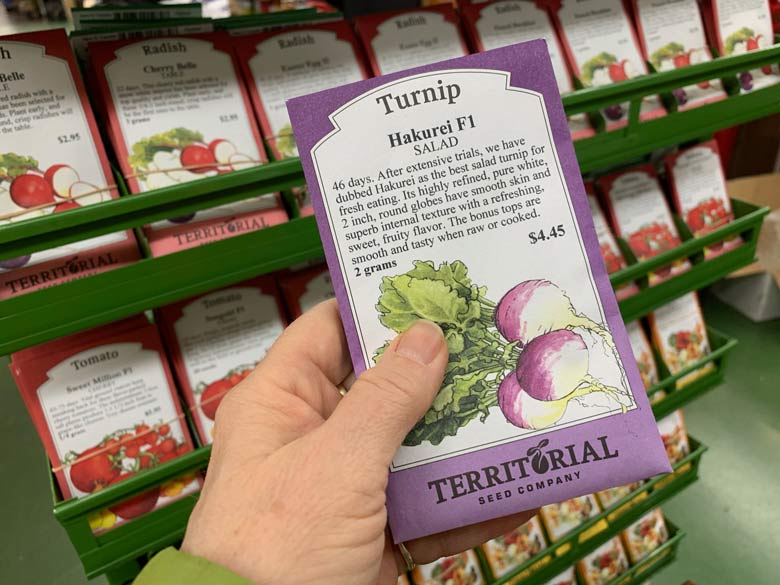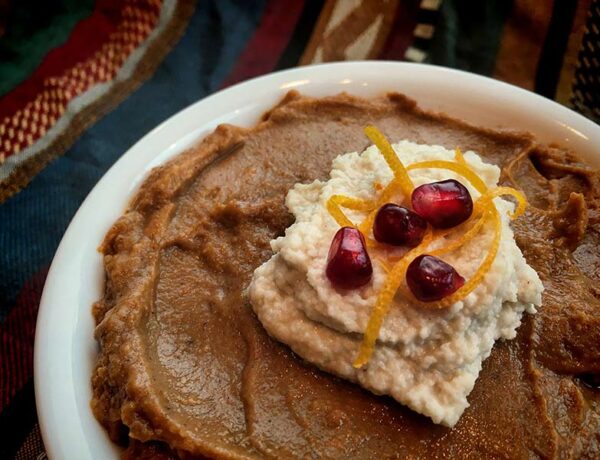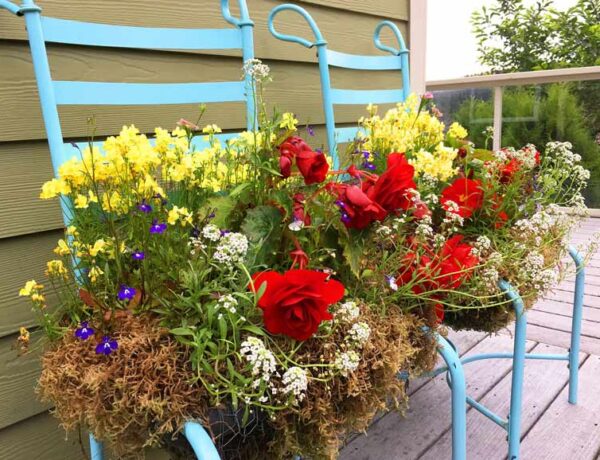Sweet or savory? Most every evening, Marty and I discuss this topic. Translated, it means, “Shall we do a sweet or savory breakfast tomorrow?”
Last night, Marty was especially emphatic: “Savory!”
His timing was good. I’d recently picked up a copy of the Forks Over Knives magazine, a quarterly publication that focuses on a whole-food, plant-based lifestyle.
After reading some of the amazing testimonials (health transformations that folks realize after reducing their intake of eggs, dairy, meat, and processed oils) I began flipping through the recipes.
“Ah!” I exclaimed. “Here’s a section called Breakfast Hash: 4 Ways.”
I settled on one called, Indian Spiced Chickpea Hash. Definitely savory. I’ll share the recipe in a few moments. I scanned the ingredients, making sure I had them covered, though I’m no slouch when it comes to improvising (experimenting) in the kitchen.
The first ingredient: Chopped onions.
For some reason, the word ONIONS grew larger than 12-point text. “It’s almost time to start my onions seeds!” I said, half turning towards Marty. He looked at me in wonderment, though I didn’t mind.
[perfectpullquote align=”full” bordertop=”false” cite=”” link=”” color=”” class=”” size=””]With seeds to start, could spring be far behind?[/perfectpullquote]
Onions — and most everyone else in the Genus Allium, including leeks, chives, garlic, and shallots — are one of the hardiest plants one can grow in a cool/cold climate. I remember an April years ago. I transplanted two hundred ‘Buffalo’ onion seedlings that I’d nurtured for weeks under lights in the basement. That night, a blizzard scorched the island. The next morning, no seedlings in sight.
Buried.
I shouldn’t have worried. The snow melted by the end of the next day and though most of the seedlings needed a little propping up, they marched onward and produced beautiful bulbs. By the way, Buffalo onion seeds are no longer available. Lesson learned:
[perfectpullquote align=”full” bordertop=”false” cite=”” link=”” color=”” class=”” size=””]Don’t become too attached to a hybrid because they are here today, gone tomorrow.[/perfectpullquote]
[Hi, Marion Owen here. This article was originally published in the Kodiak Daily Mirror, the hometown newspaper for Kodiak, Alaska. You can access the archive page for my past columns, written each week since 1986. One more thing… if you’re a gardener and your compost isn’t behaving as it should, I invite you to discover your #1 Composting Mistake by taking my 60-second assessment here].
If you’re itching to get your hands in the dirt, then begin making preparations to start your first seeds of the season.
No seeds? No worries!
Sutliff’s Hardware just set out their seed racks. Best of all, there is a wonderful selection from FOUR companies this year: Johnny’s Selected Seeds, Ed Hume Seeds, Territorial Seeds, and Botanical Interests.
So what seedlings to get started?
That depends.
Knowing when to start what seeds can be confusing and downright overwhelming. I’ll try to demystify the process. And I’ll cover this in more detail in future columns, but this should help you get started. Besides, the clock is ticking, as you’ll see shortly.
Let’s say you plan to transplant seedlings outside on May 1. Great. Now, look up how long it takes for a seedling to grow to a transplantable size. Onions, for example, can take up to 12 weeks. So, counting back from May 1 gives you February 1 as a seed-sowing date.
Here is a shortlist of some early-to-start seeds, with the corresponding time it takes from seed-sowing to transplanting:
- 12 to 14 weeks: chives, oregano, mint, yarrow, parsley, pansies, lobelia
- 10 to 12 weeks: celery, leeks, globe artichoke
- 8 to 12 weeks: onion (bulbing types), green onion, thyme, feverfew, valerian, catnip, snapdragons, alyssum.
A quick glance at the list tells you that the time has already come to start oregano, mint, and pansies. While this timetable is not cast in stone, the question begs to be asked, “Do you have all your seed-starting supplies ready?”
And now, as promised, The Recipe…
Indian-Spiced Chickpea Hash
1 cup chopped onion
1 cup chopped green pepper
1/2 cup chopped carrot
1 chopped jalapeno pepper
3 cloves garlic, minced
1/2 to 1 cup vegetable broth (I use the bean juice)
2 tsp curry powder
1 tsp ground cumin
1/2 tsp ground coriander
1/2 tsp cinnamon
2 15-oz chickpeas (garbanzo beans)
1 cup cooked wheat berries
1 pkg frozen spinach
Salt and pepper to taste
1/4 cup chopped fresh cilantro
To make life easier, do these two things the night before: Place 2 cups of water in a saucepan. Bring to a boil and stir in 1 cup of wheat berries. Turn off heat, cover, and let sit and soak until morning. (Wheat berries normally take 45 minutes to cook. This way you save energy and fuss). Also, take out a package of frozen spinach and set in a container to thaw overnight. The next morning:
In a large skillet cook the first 5 ingredients (through garlic). Stir occasionally, drizzling broth as needed to prevent sticking. Add spices, chickpeas and cook for 10 minutes. Add remaining broth, 1 cup of the wheat berries (save the rest for soups or add them to your oatmeal) and spinach. Cook for 5 minutes, season with salt/pepper and serve with lemon wedges. Makes 5 to 6 cups. Use leftovers in wraps or soups.
Yum. A savory breakfast and a gardening column that began with ONIONS!
-=-=-=-=-=-=-
P.S. Slowly but surely I’m posting over 1,200 of my weekly gardening articles, which you can access here. And if you want to amp up your composting game, be sure to check out my report: “220 Things You Can Compost.” To contact me by email: marion (at) marionowenalaska.com.





No Comments